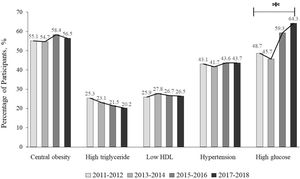The Reserve Bank of India (RBI) recently made headlines by cutting the repo rate by 25 basis points, bringing it down to 6.25%. This strategic decision marks the first reduction of its kind after five years and aims to stimulate growth, particularly within the housing sector. Real estate developers and financial institutions are optimistic, predicting increased affordability for home loans and heightened demand among potential buyers.
The unanimous decision by the six-member Monetary Policy Committee (MPC) is set to have significant ramifications. Real estate associations have heralded this change as a key boost to the housing market, particularly for affordable and mid-income segments. Boman Irani, President of the Confederation of Real Estate Developers’ Associations of India (CREDAI), expressed optimism, stating, “The RBI’s decision to reduce the repo rate supplements recent announcements in the budget aimed at boosting spending and spurring economic growth.” Such sentiments echo throughout the industry.
How will this translate to actual savings for the average home buyer? With the cut expected to transfer to loan interest rates, borrowers should see their monthly payments decrease. For example, someone with a ₹30 lakh loan over 20 years, originally at 8.5% interest, would have monthly payments of approximately ₹26,035. Following the rate reduction to 8.25%, the new EMI drops to ₹25,526, yielding savings of ₹509 each month, which totals ₹1,22,175 over the lifespan of the loan.
Real estate leaders like G. Hari Babu, president of the National Real Estate Development Council (Naredco), emphasized the potential for increased sales and reduced inventory of unsold homes, stating, “With lower interest rates, we expect to see increased sales, improved liquidity, and a reduction in the inventory of unsold homes.” Developers, especially those focusing on affordable housing, are preparing for augmented activity as potential buyers react positively to these financial incentives.
Some companies anticipate direct benefits from the repo rate cut, such as improved access to financing and reshaped consumer sentiment. Consultant Anshuman Magazine highlighted, “This much-awaited move by the RBI is poised to significantly boost the housing segment by stimulating demand, particularly among first-time buyers.” The reduction of interest rates not only signifies lower monthly payments but also enhances overall affordability for many consumers contemplating their first home purchase.
Interestingly, the housing market has been subject to fluctuations, which the RBI aims to reverse with this calculated move. “We expect to see positive sentiments infuse back to the real estate sector,” says Manoj Gaur, CMD of Gaurs Group. Lower borrowing costs mean developers could finance projects more affordably, which may spur new constructions, especially aimed at mid-segment buyers.
Realtor responses suggest cautious optimism, expressing hope for greater future cuts to stimulate the housing sector even more. While the current rate decrease might provide relief, there remains the potential for additional reductions. Irani forecasts, “While the current cut may have limited direct impact, we anticipate upcoming MPC meetings will provide stronger impetus to overall demand, accelerating housing sales.”
Anarock Chairman Anuj Puri noted, “It is undeniably a major boost to the homebuyers, particularly for affordable housing buyers.” Many are expecting banks to respond swiftly to the repo cuts and provide competitive rates for home loans. Prashant Sharma, president of Naredco-Maharashtra, emphasized the urgency for banks to facilitate this transmission effectively to maximize consumer benefit.
The ripple effects of the repo rate cut are extensive, reaching far beyond just home loans. Builders are likely to revise sales prices to remain competitive and attract buyers with the improved financing options available. With construction costs set to decline, developers could find themselves operating with improved margins, which might encourage the initiation of new projects.
According to Gaurav Kansal, Director of KBP Group, the timing of this rate cut couldn’t be more favorable, especially as it stimulates the affordable housing segment. The reduction may also have broader impacts on related industries such as cement and steel, creating multiple rounds of positive economic outcomes as housing demand increases.
For homebuyers, this current environment presents both challenges and opportunities. The decision to lower the repo rate creates space for previously hesitant customers to enter the market. “We are witnessing what we term as a 'trigger effect' whereby this reduction encourages previously reluctant purchasers to engage with the market,” explains Siddharth Maurya, Founder & Managing Director of Vibhavangal Anukulakara Private Limited. This shift indicates increased interest among the working class who are sensitive to changes in EMIs.
Considering the overall economic backdrop, many believe this is the perfect window for renewed investment in housing. Garvit Tiwari, Director of InfraMantra, warns, “Declining urban consumption is of significant concern, and with this cut, some reversal is likely in the coming quarters.” The expectation is for increased housing demand as consumer confidence grows and financial strain lessens due to lower repayment commitments.
This scenario shapes up as the ideal moment for prospective borrowers to evaluate their options, including refinancing existing loans or engaging with lenders for favorable terms on new loans. With the repo rate cut, the golden opportunity exists for borrowers to lessen their financial burden, which can lead to more vibrant economic activity across the housing sector.



